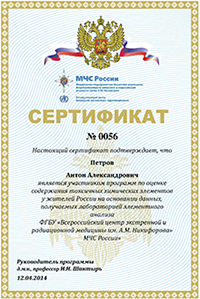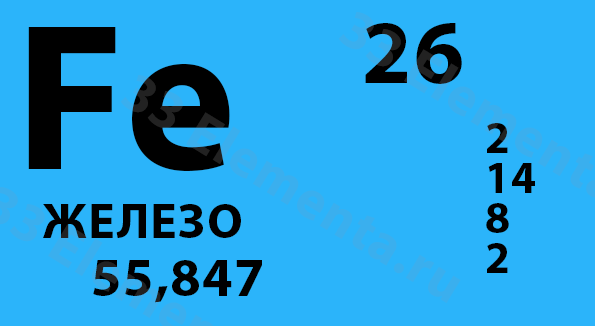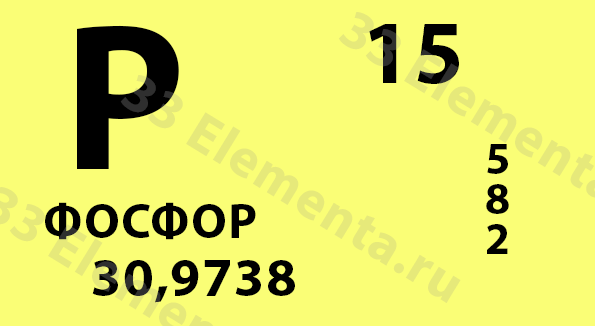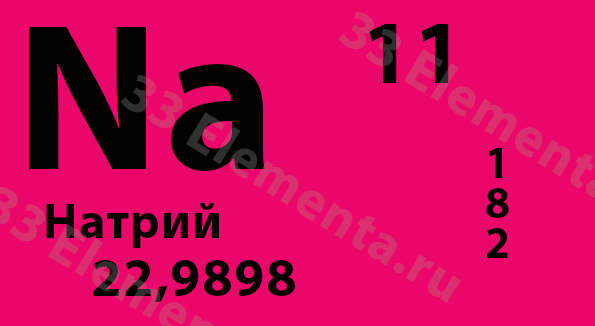It is important to know:
Why do people choose the Clinic of the Ministry of Emergency Situations?
Which steps necessary to do the test?
How to determine the amount of copper in the human body
Dear friends!
This article is focused on such an essential vital trace element as copper (Cu), located under the number 29 in the periodic table.

Copper is the malleable metal of red color, known to man since the ancient times, due to the fact that its nuggets can be found in the open.
A Russian name of this metal ("med") comes from “smida”, the word used by Old European population for all metals in a general.
Copper started to be widely used for making tools and weapons. Over a millennium this metal used to play the crucial role in development of the ancient society, thanks to the development of copper smelting and the suitability of this metal for cold forging.
Well-known malachite is one of the copper compounds in the form of Cu2 (OH) 2CO3).
Copper plays the essential role for the entire vegetal world, since copper-containing proteins and enzymes are contained by plants and are involved in the vital processes of photosynthesis and growth. For example, the low content of copper in the soil of the cultivated lands in The Netherlands and Denmark resulted in a series of crop failures.
In 1808 a French scientist Louis Vauquelin discovered copper in the living body. The studies showed that the lack of copper in the body of domestic animals leads to anemia, spinal cord damage, reduced pigmentation and other pathologies.
As for exceeded level of copper in the body, studies of domestic sheep showed that it gets accumulated in the liver and leads to hemolysis and death.
Copper gets into the environment mostly thanks to non-ferrous industry. We also get it from food and water we consume, dishes and packaging, automotive emissions, medicines and in the course of our activities.
Controlling the level of copper in the body is especially essential for people engaged in the iron and steel industry, creative professionals and professional athletes.
Copper belongs to group of essential trace elements, but it is worth noting that, depending on the hostile environment, a sector of employment and some other factors, it is necessary to monitor this trace element in the body, because when its level is exceeded it puts the human health at risk.
Considering the main roles copper plays in the body, it is worth noting the following aspects:
- copper stimulates the absorption of proteins and carbohydrates;
- raises the threshold of the body resistance to infections;
- participates in activity of the thyroid gland and increasing insulin activity, etc.
Ions of monovalent and divalent copper, which are widely present in nature and act as cofactors of more than 30 different enzymes are especially important for people.
The human body contains about 72 mg of copper, including 30% in the liver and 30% in bones and muscles.
Regarding the metabolism of copper in the human body, it was noticed that babies who were bottle-fed with cow milk lacked iron and copper and were prone to anemia and the demineralization of the skeleton.
Also, those babies who were fed with breast milk which lacked copper were prone to rickets.
Whole-grains products, fresh greens and vegetables as well as liver must be included into a diet in order to avoid the lack of copper in the body.
A special role of copper lies in anti-inflammatory activity. The presence of this element reduces the manifestation of such autoimmune diseases as rheumatoid arthritis, sciatic nerve neuritis, myalgia, etc.
Considering copper interacting with other trace elements in the body, one of the main functions of copper lies in its interaction with iron, and when accumulated iron or zinc exceed their level in the body it leads to decrease in content of copper.
We can say that Cu / Zn ratio is one of the most important constituent of the body, it is needed in order to maintain its stable work.
Copper is a trace element that supports the energy balance and contributes to the effective absorption of iron in the human body.
The exceeded level of copper leads to zinc deficiency and manifests itself through the symptoms typical of this condition, i.e. insomnia, hair loss, failure in menstruation, depression.
The lack of copper and the effect it has on the body.
The lack of copper leads to disruption in shaping of the heart-vascular system and reduced levels of collagen and elastin in the body.
The lack of copper deficiency in the body is not typical of people with the normal way of living. This rare condition might be caused by low protein in the body, malnutrition, old age, alcohol, an excess of fructose and egg yolk or a genetic predisposition.
The lack of copper manifests itself through the following symptoms:
- skin pallor, skin rash;
- high cholesterol;
- phlebeurysm;
- the liability to viral infections;
- the intestinal disorders and body weight loss;
- degeneration of the sex glands;
- osteoporosis, etc.
The excess of copper in the body is caused by the following factors:
Changes in all types of metabolism, followed by the necrosis and progressive fibroplastic processes.
Disruption of activity of organs and their damaging, followed by irreversible consequences.
The mild excess of copper in the body puts it at risk of coronary disease and liver damage.
It is worth noting that an overdose of copper, caused by its inorganic form getting into body with the polluted water or with medication is hazardous for the body.
Food which contains organic copper cannot make the limit of this element in the body exceed, since its excess gets removed naturally with metabolic-waste products.
Also, the accumulation of copper in the body occurs gradually, in the course of stress or pregnancy, or acute chronic diseases involving severe inflammatory processes, or diseases of the liver and kidneys, etc.
It is worth noting that hair makes a good indicator for determining the excess of copper in the body in the course of hepatitis, cholestasis, liver cirrhosis, inflammation of the joints, eczema, etc.
Analyzing the requests made by the consumers regarding copper, we have detected the following variations:
• how to determine the amount of copper in the human body;
• how to determine the amount of copper in the body;
• how to check the level of copper in the body;
• how to raise the level of copper in the body;
• how to increase the level of copper in the human body;
• how can I learn the level of copper in the human body;
• how the level of copper in the body can be determined;
• how to replete copper in the body;
• how to find out the amount of copper present in the human body;
• how to determine the limit of copper for a child and an adult;
Answering the question of “how to determine the amount of copper is in the human body?”, we should focus on the most preferable and accurate method, capable of determining the presence of the essential and toxic trace elements in the human body, i.e. the method of inductively coupled plasma mass spectrometry, which provides the data on copper along with the other 32 medically-studied trace elements through studying inorganic samples (hair, bones, nails, etc.).
The need for this innovative technique became obvious since that there was no method capable of determining a number of toxic trace elements in the body and the existing methods were either too complex, unobtainable or economically unviable.
Toxic trace elements get systematically accumulated in the tissues, organs, bones and other body structures, therefore it is impossible to detect their exact presence through studies of the organic samples such as urine, blood, cerebrospinal fluid, saliva, etc.
It also applies to the detection of the vital trace elements when their exact quantity needs to be determined in order to build an overall picture of the bioelemental status qua the aggregate of vital and toxic elements.
That is exactly why the unique laboratory of elemental analysis aimed at detecting and monitoring the presence of toxic trace elements in the human body of was launched within the Clinic of the Ministry of Emergency Situations in 2007. The service was initially meant for employees of the huge structure accountable to the Ministry of Emergency Situations.
The spectral analysis (you can learn more about the method by clicking this link http://www.mineralogram.com/bioelementnyystatus.html) is a unique method which provides the most accurate information both on vital and toxic trace elements, present in a human body, which makes it possible to study the wide range of indicators instead of focusing on a certain single chemical element.
You can look into an example of the study done through the method of the spectral analysis by clicking this link.
It is a matter of great importance, since the trace elements constitute a single system and the lack of some elements causes the accumulation of the others, which results in replacement of the certain elements with the other once.
As you might see, our project is fully devoted to the spectral analysis and its principle with regard to health control. We will gladly assist you at every step of this study, elucidate the obtained results and, if necessary, advise you on how to restore the elemental status of your body.
Our experts will be happy to answer any questions you may have regarding the method of spectral analysis!
The uniqueness of this method makes it possible to study samples sent from any part of the world as a usual letter. It is a truly unique tool of the health control.
Remember that the systematic control over the vital sighs it is the major step on the way to well-being and longevity.
We would like to thank you for your kind attention!
Yours faithfully, 33 Elementa.Ru
Publications
Is eating with a silver spoon bad for health of children and adults? Myth or real danger to the bodyRead >>
At the present review we do akcent on question: – “Why do patients choose the Clinic of the Ministry of Emergency Situations of Russia? ”.Read >>
The concept of the health control as a factor of the awareness of the body-related issues and the proper attitude towards themRead >>





